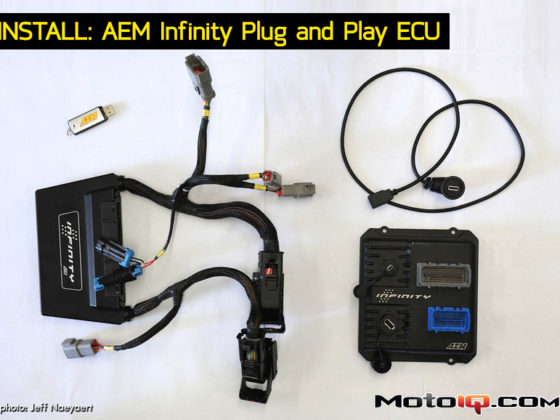,
 In order to ensure a reliable fit, you want to clean the mating surfaces as much as possible. A thin wire brush would be best to start the process, but we had to rely on wonderful aromatic chemicals instead. It’s an awkward place to be spraying brake cleaner, too, so wear goggles and try to avoid any contact with your skin.
In order to ensure a reliable fit, you want to clean the mating surfaces as much as possible. A thin wire brush would be best to start the process, but we had to rely on wonderful aromatic chemicals instead. It’s an awkward place to be spraying brake cleaner, too, so wear goggles and try to avoid any contact with your skin. Partially due to impatience, but also as a good way to blow out any remaining debris, I like to use a little compressed air to dry everything up and to finish the cleaning process.
Partially due to impatience, but also as a good way to blow out any remaining debris, I like to use a little compressed air to dry everything up and to finish the cleaning process. A little bit of blue Loctite or other medium-strength hardware fastener is a good idea to avoid having any of the studs back out with repeated use and vibration. Permanent strength is a bad idea unless you want to use a torch or just toss your hubs and get new studs before you’re due.
A little bit of blue Loctite or other medium-strength hardware fastener is a good idea to avoid having any of the studs back out with repeated use and vibration. Permanent strength is a bad idea unless you want to use a torch or just toss your hubs and get new studs before you’re due. Get each of the studs started and tightened by hand until they’ve bottomed out.
Get each of the studs started and tightened by hand until they’ve bottomed out.  Achilles Motorsports recommended 30-35 ft-lb of torque, and 35 ft-lb seemed to be the limit for the bullet-nosed hex fitment, so it worked perfectly. The rears are easy to tighten because you can use the parking brake to keep them locked from moving. For the front, as pictured above, I like to use a screwdriver in one of the vanes of the rotor to prevent movement. You could just have someone step on the brake pedal if you have help, of course.
Achilles Motorsports recommended 30-35 ft-lb of torque, and 35 ft-lb seemed to be the limit for the bullet-nosed hex fitment, so it worked perfectly. The rears are easy to tighten because you can use the parking brake to keep them locked from moving. For the front, as pictured above, I like to use a screwdriver in one of the vanes of the rotor to prevent movement. You could just have someone step on the brake pedal if you have help, of course.


